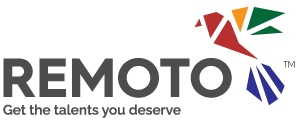Not long ago, working from home was seen as a rare privilege. Today, it has become a core feature of how competitive businesses operate. The shift from office-based models to distributed teams has redefined flexibility, productivity, and performance expectations. What was once considered an exception is now woven into everyday business strategy.
However, remote work does not succeed solely through good intentions. It demands thoughtful planning, a shift in leadership styles, and well-integrated systems. Many companies struggle with communication gaps, misaligned expectations, and unclear workflows simply because they haven’t built the right foundations.
To truly prepare for success from home, companies need to examine closely how their teams work, how their tools work, and how their leaders lead. Everything must be aligned with a clear vision supporting individual autonomy and collective outcomes.
In this blog post, we analyze all aspects of remote readiness in companies.
Infrastructure Matters: Building the Digital Foundation for Collaboration
Technology is central to remote work, but handing out laptops and login credentials will not create a productive environment. Companies need fully integrated digital systems that support clear communication, project visibility, and easy access to information. Without this structure, even the most skilled teams will experience frustration and delays.
The real value comes not from the number of tools used but from how effectively they support everyday work. Teams often lose time switching between platforms that do not connect well. Confusion around which and how to use tools usually leads to inefficiency. To avoid this, your company must prioritize streamlined processes and consistent onboarding.
A strong digital foundation also reduces the need for constant check-ins. When information is clearly organized and easy to find, employees can work with greater independence. This creates a more efficient environment that supports accountability and reduces unnecessary friction.
Culture Without Walls: Creating Meaningful Connection Remotely
Culture does not vanish when people stop sharing the same space. It simply takes on a new form. In remote environments, building a strong culture requires intentional effort. It grows from clear communication, shared values, and rituals that promote connection across distance.
This can take many shapes. Some teams schedule regular video check-ins to replace informal office conversations. Others create space for non-work-related interaction, helping people feel like more than just coworkers. These practices create a sense of belonging and help maintain team morale.
Leaders play a key role in shaping this experience. Their presence, communication style, and ability to listen have a lasting impact on how connected and supported people feel. A strong remote culture grows when everyone feels part of a shared purpose, even when working miles apart.
Hiring for Remote Success: What to Look For
Finding the right talent for remote work involves more than reviewing resumes. Companies must identify candidates who are comfortable working independently, who communicate clearly, and who take responsibility for their work without requiring constant oversight. These qualities can be difficult to detect using traditional interview methods.
To address this, remote-ready companies are rethinking their hiring processes. They design tasks that reflect real working conditions and encourage candidates to demonstrate how they manage their time and solve problems. This helps hiring managers evaluate not only what candidates can do, but how they do it.
People who succeed in remote roles tend to be proactive, organized, and flexible. When companies build teams around these strengths, they reduce the risk of misalignment and create a more resilient workforce.
Leading Remote Teams: Guiding Without Hovering
In a distributed work environment, leadership must focus on direction and clarity rather than control. Managers who rely on monitoring or frequent check-ins often erode trust. Instead, strong remote leadership depends on setting expectations clearly and making sure teams understand how their work contributes to larger goals.
Regular communication helps maintain alignment, but it should be purposeful. Information must flow freely across departments, and updates should be relevant and actionable. This allows teams to stay connected and focused without being overwhelmed by meetings.
Emotional intelligence becomes a key skill for any leader in this setting. Recognizing when someone feels isolated, understanding team dynamics, and knowing how to encourage performance all contribute to a healthy and productive culture. A manager who can build trust remotely will lead a team that feels engaged, valued, and capable.
Preparing for Long-Term Remote Growth
Remote readiness is not a one-time project. It involves ongoing reflection and adjustment. Businesses must constantly ask whether their systems are effective, whether their team members feel supported, and whether leadership is enabling progress. These questions reveal whether the company is prepared to operate at its best in a remote or hybrid model.
Think about the clarity of your internal goals. Consider how your tools support collaboration. Reflect on how connected your team members feel, both to their work and to one another. If these areas are strong, you are building a company that can thrive beyond the walls of a traditional office.
Companies that take remote work seriously are not just adapting. They are evolving into more flexible, inclusive, and resilient workplaces. With the right structure in place, remote work can serve as a long-term advantage rather than a short-term response.














